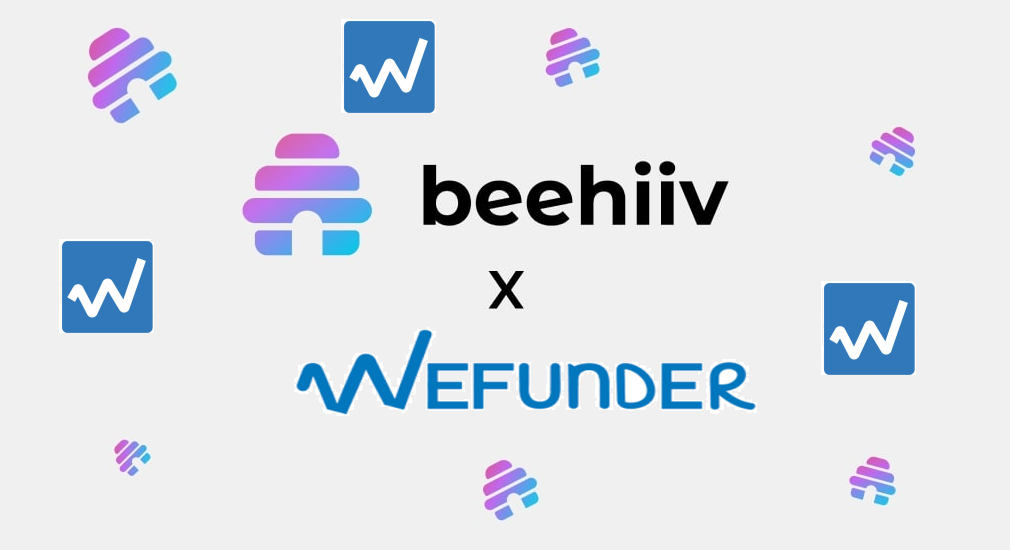This comprehensive guide breaks down how to sell shares in equity crowdfunding startups invested in through platforms like StartEngine, Wefunder or Republic. Startup investing is hard. It’s a long term game, and not just a few months, or even a year or two. Depending on your investment thesis many investment horizons are between 5 and 10 years. Once you’ve invested, there’s no turning back: your money is locked in for the long haul.
But this creates a brutal investment cycle for the growth of equity crowdfunding and deters potential investors. For those with a shorter investment horizon, many are left wondering “Can I sell my shares in startups I have invested in through equity crowdfunding?” The answer: Yes! This guide will break down how you can sell your startup investments obtained through platforms like StartEngine, Wefunder and Republic, strategies, regulations about lockup periods, and everything else you need to know about selling your shares in startups.
Why Sell Shares in Equity Crowdfunding Startups?
Liquidity is incredibly important for any portfolio and the industry as a whole. Many people have made great investments, with thousands of percentage points in gains locked up with the inability to sell. Sure, they could go up more, but when you’ve made a good investment and sitting on the cusp of a major windfall, it only makes sense to offload some. This allows investors to invest in more startups thus propelling an upwards growth cycle of equity crowdfunding and startup investing ecosystems. Ultimately, liquidity is a good and vital part of equity crowdfunding so ensuring investors have the ability to sell will play a crucial role in equity crowdfundings growth.
Regulatory Lockups
Long term investing isn’t just a preference within equity crowdfunding, in some instances, it’s mandated by law. There are two types of raises in equity crowdfunding:
- Regulation A (Reg A)
- Regulation Crowdfunding (Reg CF)
Reg A are larger raises, typically more expensive to launch, and used by larger companies to raise capital. This means the companies using them are considered ‘safer’ and there are less restrictions associated with holding the shares acquired through a Reg A raise. Notably, there is no lockup period or restrictions on selling Reg A raises. This means investors can buy shares in a Reg A raise then sell them anytime, including shortly after acquiring the shares.
However, Reg CF is a different story. The majority of investors investing in equity crowdfunding startups invested in Reg CF offerings. Reg CF raises have a mandatory lockup period of 1 year before investors can sell their investments. This means that, by law, even if you have a buyer setup for a transaction, you cannot sell those shares until 365 days after you bought them.
The upside to this is once you do sell, it will be taxed at long term capital gains. But investors cannot sell even if they need the money and find someone willing to buy, and a transfer agent willing and able to facilitate the transaction. This could also benefit investors by design. Startups typically make a lot of progress in a year, so forcing investors to hold could mean their investment appreciates substantially over time resulting in an unexpected windfall.
How to Sell Shares in Equity Crowdfunding Startups
There are actually a few ways you can sell your shares, assuming the 1 year lockup period has expired. This process will take a while, and there are a lot of factors at play so this isn’t a guarentee. But these are avenues available and potentially worth pursuing. The main ways are:
- StartEngine Marketplace
- Find a private buyer
- Sell on a Secondary Platform
- Sell them back to the company
Each of these have their pros and cons, but worth pursuing in their various capacities for sellers looking to sell their shares.
StartEngine Marketplace
If you are looking to sell shares within equity crowdfunding, StartEngine Marketplace is the first place you should go. It’s incredibly simple, easy to use and has hundreds of companies available for users to sell. StartEngine Marketplace is StartEngine’s liquidity platform that functions like a simple bulletin board. Investors find the company they want to sell through a drop-down list, then click a ‘sell’ button. Investors put in the price at which they want to sell their shares, add a proof of ownership document, then click submit and then they are listed. StartEngine does the rest.
Pro’s of StartEngine Marketplace:
- Specifically designed for equity crowdfunding companies and startups
- Most active equity crowdfunding secondary marketplace
- Super easy and simple to use.
- Lots of volume
Cons of StartEngine Marketplace
- Requires Owners Bonus to sell shares ($275/year)
- StartEngine does not allow transactions on every startup
- Relatively hefty fees per transaction
How To Sell Shares on StartEngine Marketplace or StartEngine Secondary
This break down will show you step-by-step on how investors can get started selling using StartEngine Marketplace and StartEngine Secondary. Getting started on StartEngine Marketplace and StartEngine Secondary is simple and easy. Follow these steps to start selling your shares.
- Go to StartEngine.com and click on the “sign up” button in the top right.

- You will need to create an account. The account you are creating here is simply a basic StartEngine account. You will also need a brokerage account also (like what you create on stock market investing apps) to use marketplace. Clicking sign up will take you here, and you need to create an account using your real name:

Creating a StartEngine Brokerage Account
- Once you create an account, it will take you to the StartEngine homescreen. You then need to create your brokerage account. There’s no direct link on their homepage, but you will be prompted once you try to buy or sell on any secondary marketplace on StartEngine. To get started, after you made your first account, go to this link and signup for a brokerage account: https://account.startengine.com/create-account. It will take you to a page that looks like this:

- Once you are there, answer honestly. You will have to give personal information and information about your investing goals. It is normal and secure, but part of creating an account. Once completed, it will likely approve your account instantly. If not, just wait a few days and it will get approved. After StartEngine approves your account, go back to the StartEngine home page. After that, click on “start investing” in the top right, then click “marketplace” in the drop-down.

Selling on Marketplace
- This will take you to the actual marketplace. Then you can begin selling stock in startups you have investing in, or buying companies. Once there, you can use the search bar to find the company you are looking to sell. In this instance, lets use TerraCycle as the example because they are one of the most active companies trading on Marketplace:

- Here you can put in buy and sell orders, see details about the company, and see current sell offers and transactions for the company. For those looking to sell, simply click on the “sell” button and enter the price you want to sell at, number of shares, then click “review offer”:

- Then you just have to enter your proof of ownership documents and hit submit, then you’re done! StartEngine will review your submission, and approve it if valid. Once approved, you will have a sell order listed on the marketplace. If someone buys your shares, you will get an email from StartEngine telling you that someone bought it, and you just have to reply “Yes” that you want to complete the transaction for it to go through. After that, the money will land in your StartEngine account and you can withdraw it!

How To Buy and Sell Shares on StartEngine Secondary
If you’ve followed the above steps, buying and selling shares on Secondary is incredbly easy. StartEngine Secondary is another great option to sell shares in equity crowdfunding startups. Since you already created a brokerage account, that account will also allow you to trade shares in companies on StartEngine Secondary. StartEngine Secondary is like a mini-stock market. The main difference is it lets users put in both buy and sell orders, whereas StartEngine Marketplace only lets users put in sell orders, and buy at those prices. But StartEngine Secondary is also more exclusive and only lists a small number of companies. Since you can put in buy and sell orders, it’s much easier to complete a transactions.
To get started trading on StartEngine Secondary, simply ensure you have created a brokerage account with StartEngine then go to this link:
Once you are there, you can search for companies currently listed on the platform. If you find a company that you own, simply put in the sell price of the company you want, the number of shares you are selling then hit sell. If you are buying, just ensure you have funds in your account and the transaction is the same.
Find a Private Buyer
This option and StartEngine Marketplace are not mutually exclusive. You can list a company on StartEngine Marketplace, then go and find a buyer that might be interested. If you can list it on Marketplace, this is probably the easiest way to do it. There’s lots of companies that aren’t on Marketplace for various reasons. One of the main reasons is they don’t sell shares in companies actively raising on StartEngine because they don’t want to cannabalize raise amounts on the platform. This means if a company is actively raising on StartEngine, you have to sell privately.
If you can’t sell your shares on Marketplace, you can do a private transaction by finding a buyer interesting in purchasing your stock and working with the company and/or the company’s transfer agent to facilitate moving stock to the buyer.
Private Buyer Process to Sell Shares in Equity Crowdfunding Startups
This can be a difficult and somewhat expensive process, depending on how you go about it. But typically it works something like this:
- A Seller finds a buyer wanting to buy their stock
- Seller approaches startup and their transfer agent about transfering stock from seller to buyer
- Seller sets up an escrow account with escrow agent to facilitate transaction, including drafting an escrow agent.
- Buyers typically must be accreddited investors, so escrow agent will verify this information
- Buyer will transfer funds to escrow agent. Once funds clear, escrow agent will give paperwork to buyer indicating ownership in shares and help faciliate with startup and transfer agent that buyer is on the startups cap table as owner of those shares.
- Seller will then be given the funds
This is a pretty lengthy process with a lot of parties involved. It’s also more expensive as many of these parties will charge hefty fees for this transaction. There’s lots of paperwork involved, accreddidation verfication, and this is only per transaction. But if you have enough stock in a company, it could be worth it.
Pros of Private Buyer
- Gets the job done
- Most consistent way to sell shares in equity crowdfunding startups
Cons of Private Buyer
- Requires accreddited buyer
- More expensive
- Time consuming
Sell Shares in Equity Crowdfunding Startups on another Secondary Platform
StartEngine Marketplace and Secondary are secondary platforms, but they’re not the only ones. They’re the only one dedicated to equity crowdfunding investments, but there are otheres. These platforms typically focus on venture-backed startups, but can be used to sell shares in equity crowdfunding startups. For example, Forge Global also facilitates private market trades, but it’s typically only for the largest private companies out there. However, some of those have originated from equity crowdfunding. For example, Boxabl and StartEngine are both able to be bought and sold on Forge Global. But there are minimums amounts of stock that have to be sold and only accreddited investors are allowed on the platform.
There are several, albeit few established, platforms looking to establish secondary trading in both the private markets and equity crowdfunding. So, exploring the various platforms to see if they are a good match based on the stock you hold might end up resulting in a match.
Sell Your Shares in Equity Crowdfunding Startups back to the Company
This is the most unlikely option. In some instances, private companies will do stock buybacks, but it is very rare. But it’s worth reaching out to the company and seeing if they are planning any stock buybacks in the near future and expressing your interest. This is unlikely and probably the worst option for a few reasons. One key reason is because if the startup has enough money to conduct stock buybacks, they’re probably doing quite well for themselves so holding on is probably the best course of action. As well, very few private companies do share buybacks, so it’s not a great avenueto sell shares in equity crowdfunding startups.
Conclusion
There are a number of ways you can sell shares in equity crowdfunding startups. This comprehensive guide outlines the various ways investors in equity crowdfunding can get access to selling their shares that they have acquired on platforms like StartEngine, Wefunder, and Republic. Following this guide can gives investors the chance at liquidity with their equity crowdfunding investments.








Leave a Reply